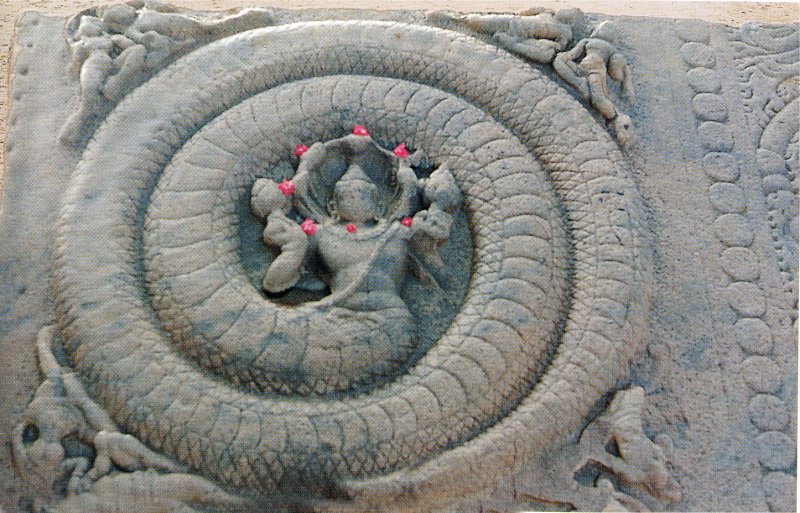 |
| Buy Rikki-Tikki-Tavi from Amazon.com |
The naga (pronounced nah’-gah with the first syllable slightly elongated) has been written about in such languages as Sanskrit, Chinese, Burmese, Hindi, and a list of other Asian tongues for centuries and found in Buddhist and Hindu religions. In Hindi, one of the primary languages of India, nag (nahg) still refers to a cobra while nagini (nah-gee-nee) indicates a female of the species. For those that remember back a few years, Rudyard Kipling’s immortally popular story of Rikki Tikki Tavi is that of a mongoose’s struggle against a pair of cobras named Nag and Nagaini.
As a fantasy creature, naga are gods or other deities that take the form of snakes, often having human hybrid features, but most notably the reptilian aspects of a king cobra. Depending on the religion and particular story, they are seen as both good and evil, though they do tend toward the negative side.
In Hinduism, it is the naga, Shesha that holds the world upon his head. This is a great honor for Shesha and shows the positive aspects, while at the same time, other naga vied to trick their cousin, the great eagle king Garuda, into stealing away the elixir of immortality from the gods and give it to them. Garuda tricked the naga so that the cut containing the elixir was stolen away before they could drink. But, a few drops fell upon the grass, and when the naga licked at the grass, it cut their tongues. Ever since, their descendants (snakes) kept the forked tongue to remind themselves and us of this treachery.
Modern Hindi tradition makes the naga guardians of water: wells, rivers, and the like. They are relatively peaceful spirits that protect the waterways and environment. However, if one should dare to desecrate the sanctity of the natural world, the naga are quick to take vengeance.
Buddhism also has its share of naga, but unlike the creatures of Hinduism, they are sometimes indistinguishable from Chinese dragons. This fact may be one of the reasons that the serpentine dragons of the orient are more snake-like than their Western cousins. Buddhist naga typically have long snake bodies with one or more heads. They are said to inhabit and protect both water and deep underground. Some are even said to have the ability to transform into human shape. Depictions of these human-like naga are often shown with a tell-tale sign: one or more cobra headed snakes extending from their backs and over their human heads.
Truly a creature worthy of respect, the guardians of water and earth, the protectors of nature, the vengeful spirits of her wrath, naga are a deeply seeded tradition in Eastern culture that has survived even into the contemporary world of oriental beliefs.


No comments:
Post a Comment
Please play nice with others. Disrespect against any commentor (or me for that matter) may result in deletion of your comment. Disagreements are perfectly acceptable - just keep it civil.